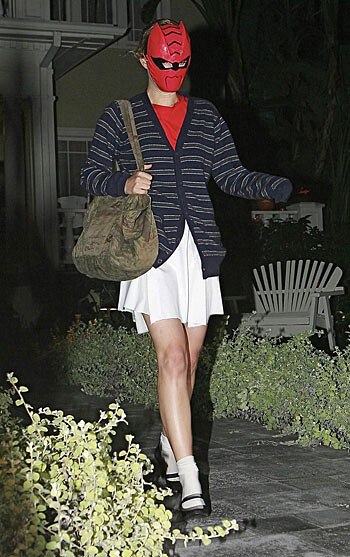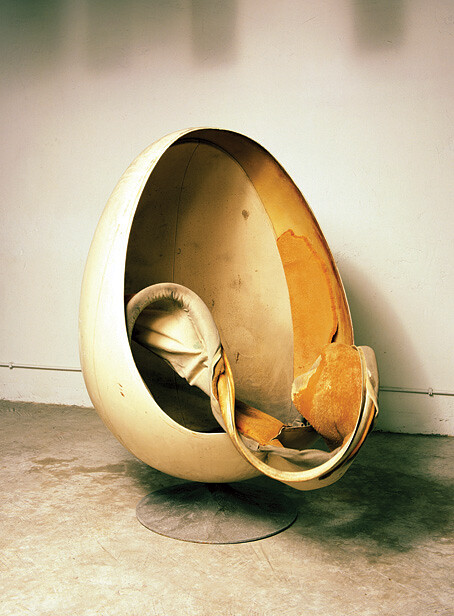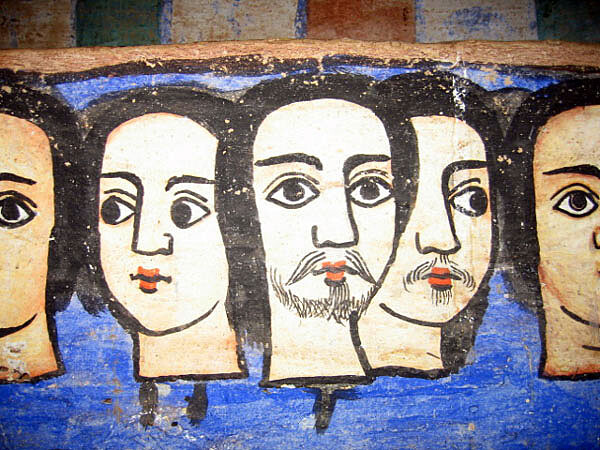Production of Sincerity
These days, almost everyone seems to agree that the times in which art tried to establish its autonomy—successfully or unsuccessfully—are over. And yet this diagnosis is made with mixed feelings. One tends to celebrate the readiness of contemporary art to transcend the traditional confines of the art system, if such a move is dictated by a will to change the dominant social and political conditions, to make the world a better place—if the move, in other words, is ethically motivated. One tends to deplore, on the other hand, that attempts to transcend the art system never seem to lead beyond the aesthetic sphere: instead of changing the world, art only makes it look better. This causes a great deal of frustration within the art system, in which the predominant mood appears to almost perpetually shift back and forth between hopes to intervene in the world beyond art and disappointment (even despair) due to the impossibility of achieving such a goal. While this failure is often interpreted as proof of art’s incapacity to penetrate the political sphere as such, I would argue instead that if the politicization of art is seriously intended and practiced, it mostly succeeds. Art can in fact enter the political sphere and, indeed, art already has entered it many times in the twentieth century. The problem is not art’s incapacity to become truly political. The problem is that today’s political sphere has already become aestheticized. When art becomes political, it is forced to make the unpleasant discovery that politics has already become art—that politics has already situated itself in the aesthetic field.
In our time, every politician, sports hero, terrorist, or movie star generates a large number of images because the media automatically covers their activities. In the past, the division of labor between politics and art was quite clear: the politician was responsible for the politics and the artist represented those politics through narration or depiction. The situation has changed drastically since then. The contemporary politician no longer needs an artist to gain fame or inscribe himself within popular consciousness. Every important political figure and event is immediately registered, represented, described, depicted, narrated, and interpreted by the media. The machine of media coverage does not need any individual artistic intervention or artistic decision in order to be put into motion. Indeed, contemporary mass media has emerged as by far the largest and most powerful machine for producing images—vastly more extensive and effective than the contemporary art system. We are constantly fed images of war, terror, and catastrophe of all kinds at a level of production and distribution with which the artist’s artisanal skills cannot compete.
Now, if an artist does manage to go beyond the art system, this artist begins to function in the same way that politicians, sports heroes, terrorists, movie stars, and other minor or major celebrities already function: through the media. In other words, the artist becomes the artwork. While the transition from the art system to the political field is possible, this transition operates primarily as a change in the positioning of the artist vis-à-vis the production of the image: the artist ceases to be an image producer and becomes an image himself. This transformation was already registered in the late nineteenth century by Friedrich Nietzsche, who famously claimed that it is better to be an artwork than to be an artist.1 Of course, becoming an artwork not only provokes pleasure, but also the anxiety of being subjected in a very radical way to the gaze of the other—to the gaze of the media functioning as a super-artist.


I would characterize this anxiety as one of self-design because it forces the artist—as well as almost anybody who comes to be covered by the media—to confront the image of the self: to correct, to change, to adapt, to contradict this image. Today, one often hears that the art of our time functions increasingly in the same way as design, and to a certain extent this is true. But the ultimate problem of design concerns not how I design the world outside, but how I design myself—or, rather, how I deal with the way in which the world designs me. Today, this has become a general, all-pervasive problem with which everyone—and not just politicians, movie stars, and celebrities—is confronted. Today, everyone is subjected to an aesthetic evaluation—everyone is required to take aesthetic responsibility for his or her appearance in the world, for his or her self-design. Where it was once a privilege and a burden for the chosen few, in our time self-design has come to be the mass cultural practice par excellence. The virtual space of the Internet is primarily an arena in which my website on Facebook is permanently designed and redesigned to be presented on YouTube—and vice versa. But likewise in the real—or, let’s say, analog—world, one is expected to be responsible for the image that he or she presents to the gaze of others. It could even be said that self-design is a practice that unites artist and audience alike in the most radical way: though not everyone produces artworks, everyone is an artwork. At the same time, everyone is expected to be his or her own author.
Now, every kind of design—including self-design—is primarily regarded by the spectator not as a way to reveal things, but as a way to hide them. The aestheticization of politics is similarly considered to be a way of substituting substance with appearance, real issues with superficial image-making. However, while the issues constantly change, the image remains. Just as one can easily become a prisoner of his or her own image, one’s political convictions can be ridiculed as being mere self-design. Aestheticization is often identified with seduction and celebration. Walter Benjamin obviously had this use of the term “aestheticization” in mind when he opposed the politicization of aesthetics to the aestheticization of politics at the end of his famous essay “The Work of Art in the Age of Mechanical Reproduction.”2 But one can argue, on the contrary, that every act of aestheticization is always already a critique of the object of aestheticization simply because this act calls attention to the object’s need for a supplement in order to look better than it actually is. Such a supplement always functions as a Derridean pharmakon: while design makes an object look better, it likewise raises the suspicion that this object would look especially ugly and repellent were its designed surface to be removed.
Indeed, design—including self-design—is primarily a mechanism for inducing suspicion. The contemporary world of total design is often described as a world of total seduction from which the unpleasantness of reality has disappeared. But I would argue, rather, that the world of total design is a world of total suspicion, a world of latent danger lurking behind designed surfaces. The main goal of self-design then becomes one of neutralizing the suspicion of a possible spectator, of creating the sincerity effect that provokes trust in the spectator’s soul. In today’s world, the production of sincerity and trust has become everyone’s occupation—and yet it was, and still is, the main occupation of art throughout the whole history of modernity: the modern artist has always positioned himself or herself as the only honest person in a world of hypocrisy and corruption. Let us briefly investigate how the production of sincerity and trust has functioned in the modern period in order to characterize the way it functions today.


One might argue that the modernist production of sincerity functioned as a reduction of design, in which the goal was to create a blank, void space at the center of the designed world, to eliminate design, to practice zero-design. In this way, the artistic avant-garde wanted to create design-free areas that would be perceived as areas of honesty, high morality, sincerity, and trust. In observing the media’s many designed surfaces, one hopes that the dark, obscured space beneath the media will somehow betray or expose itself. In other words, we are waiting for a moment of sincerity, a moment in which the designed surface cracks open to offer a view of its inside. Zero-design attempts to artificially produce this crack for the spectator, allowing him or her to see things as they truly are.
But the Rousseauistic faith in the equation of sincerity and zero-design has receded in our time. We are no longer ready to believe that minimalist design suggests anything about the honesty and sincerity of the designed subject. The avant-garde approach to the design of honesty has thus become one style among many possible styles. Under these conditions, the effect of sincerity is created not by refuting the initial suspicion directed toward every designed surface, but by confirming it. This is to say that we are ready to believe that a crack in the designed surface has taken place—that we are able to see things as they truly are—only when the reality behind the façade shows itself to be dramatically worse than we had ever imagined. Confronted with a world of total design, we can only accept a catastrophe, a state of emergency, a violent rupture in the designed surface, as sufficient reason to believe that we are allowed a view of the reality that lies beneath. And of course this reality too must show itself to be a catastrophic one, because we suspect something terrible to be going on behind the design—cynical manipulation, political propaganda, hidden intrigues, vested interests, crimes. Following the death of God, the conspiracy theory became the only surviving form of traditional metaphysics as a discourse about the hidden and the invisible. Where we once had nature and God, we now have design and conspiracy theory.
Even if we are generally inclined to distrust the media, it is no accident that we are immediately ready to believe it when it tells us about a global financial crisis or delivers the images from September 11 into our apartments. Even the most committed theorists of postmodern simulation began to speak about the return of the real as they watched the images of September 11. There is an old tradition in Western art that presents an artist as a walking catastrophe, and—at least from Baudelaire on—modern artists were adept at creating images of evil lurking behind the surface, which immediately won the trust of the public. In our days, the romantic image of the poète maudit is substituted by that of the artist being explicitly cynical—greedy, manipulative, business-oriented, seeking only material profit, and implementing art as a machine for deceiving the audience. We have learned this strategy of calculated self-denunciation—of self-denunciatory self-design—from the examples of Salvador Dalí and Andy Warhol, of Jeff Koons and Damien Hirst. However old, this strategy has rarely missed its mark. Looking at the public image of these artists we tend to think, “Oh, how awful,” but at the same time, “Oh, how true.” Self-design as self-denunciation still functions in a time when the avant-garde zero-design of honesty fails. Here, in fact, contemporary art exposes how our entire celebrity culture works: through calculated disclosures and self-disclosures. Celebrities (politicians included) are presented to the contemporary audience as designed surfaces, to which the public responds with suspicion and conspiracy theories. Thus, to make the politicians look trustworthy, one must create a moment of disclosure—a chance to peer though the surface to say, “Oh, this politician is as bad as I always supposed him or her to be.” With this disclosure, trust in the system is restored through a ritual of symbolic sacrifice and self-sacrifice, stabilizing the celebrity system by confirming the suspicion to which it is necessarily already subjected. According to the economy of symbolic exchange that Marcel Mauss and Georges Bataille explored, the individuals who show themselves to be especially nasty (e.g., the individuals who demonstrate the most substantial symbolic sacrifice) receive the most recognition and fame. This fact alone demonstrates that this situation has less to do with true insight than with a special case of self-design: today, to decide to present oneself as ethically bad is to make an especially good decision in terms of self-design (genius=swine).
But there is also a subtler and more sophisticated form of self-design as self-sacrifice: symbolic suicide. Following this subtler strategy of self-design, the artist announces the death of the author, that is, his or her own symbolic death. In this case, the artist does not proclaim himself or herself to be bad, but to be dead. The resulting artwork is then presented as being collaborative, participatory, and democratic. A tendency toward collaborative, participatory practice is undeniably one of the main characteristics of contemporary art. Numerous groups of artists throughout the world are asserting collective, even anonymous authorship of their work. Moreover, collaborative practices of this type tend to encourage the public to join in, to activate the social milieu in which these practices unfold. But this self-sacrifice that forgoes individual authorship also finds its compensation within a symbolic economy of recognition and fame.
Participative art reacts to the modern state of affairs in art that can be described easily enough in the following way: the artist produces and exhibits art, and the public views and evaluates what is exhibited. This arrangement would seem primarily to benefit the artist, who shows himself or herself to be an active individual in opposition to a passive, anonymous mass audience. Whereas the artist has the power to popularize his or her name, the identities of the viewers remain unknown in spite of their role in providing the validation that facilitates the artist’s success. Modern art can thus easily be misconstrued as an apparatus for manufacturing artistic celebrity at the expense of the public. However, it is often overlooked that in the modern period, the artist has always been delivered up to the mercy of public opinion—if an artwork does not find favor with the public, then it is de facto recognized as being devoid of value. This is modern art’s main deficit: the modern artwork has no “inner” value of its own, no merit beyond what public taste bestows upon it. In ancient temples, aesthetic disapproval was insufficient reason to reject an artwork. The statues produced by the artists of that time were regarded as embodiments of the gods: they were revered, one kneeled down before them in prayer, one sought guidance from them and feared them. Poorly made idols and badly painted icons were in fact also part of this sacred order, and to dispose of any of them out would have been sacrilegious. Thus, within a specific religious tradition, artworks have their own individual, “inner” value, independent of the public’s aesthetic judgment. This value derives from the participation of both artist and public in communal religious practices, a common affiliation that relativizes the antagonism between artist and public.


By contrast, the secularization of art entails its radical devaluation. This is why Hegel asserted at the beginning of his Lectures on Aesthetics that art was a thing of the past. No modern artist could expect anyone to kneel in front of his or her work in prayer, demand practical assistance from it, or use it to avert danger. The most one is prepared to do nowadays is to find an artwork interesting, and of course to ask how much it costs. Price immunizes the artwork from public taste to a certain degree—had economic considerations not been a factor in limiting the immediate expression of public taste, a good deal of the art held in museums today would have landed in the trash a long time ago. Communal participation within the same economic practice thus weakens the radical separation between artist and audience to a certain degree, encouraging a certain complicity in which the public is forced to respect an artwork for its high price even when that artwork is not well liked. However, there still remains a significant difference between an artwork’s religious value and its economic value. Though the price of an artwork is the quantifiable result of an aesthetic value that has been identified with it, the respect paid to an artwork due to its price does not by any means translate automatically into any form of binding appreciation. This binding value of art can thus be sought only in noncommercial, if not directly anti-commercial practices.
For this reason, many modern artists have tried to regain common ground with their audiences by enticing viewers out of their passive roles, by bridging the comfortable aesthetic distance that allows uninvolved viewers to judge an artwork impartially from a secure, external perspective. The majority of these attempts have involved political or ideological engagement of one sort or another. Religious community is thus replaced by a political movement in which artists and audiences communally participate. When the viewer is involved in artistic practice from the outset, every piece of criticism uttered becomes self-criticism. Shared political convictions thus render aesthetical judgment partially or completely irrelevant, as was the case with sacral art in the past. To put it bluntly: it is now better to be a dead author than to be a bad author. Though the artist’s decision to relinquish exclusive authorship would seem primarily to be in the interest of empowering the viewer, this sacrifice ultimately benefits the artist by liberating his or her work from the cold eye of the uninvolved viewer’s judgment.
Friedrich Nietzsche, The Birth of Tragedy, trans. Walter Kaufmann (New York: Vintage, 1967), 37.
Walter Benjamin, “The Work of Art in the Age of Mechanical Reproduction,” in Illuminations: Essay and Reflections, ed. Hannah Arendt, trans. H. Zohn (New York: Schocken Books, 1969), 242.
A version of this text was given as a lecture at Frieze Art Fair, London, on October 16, 2008.
